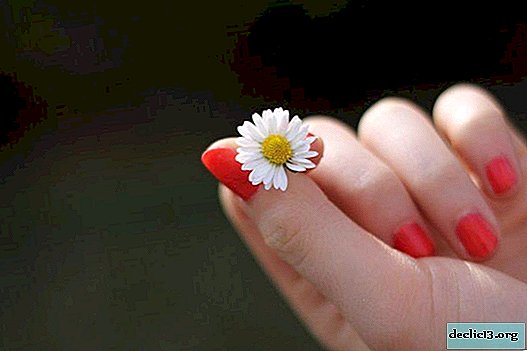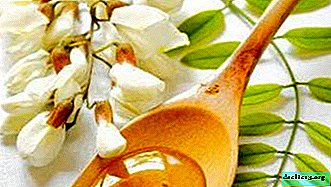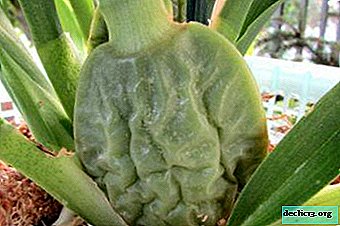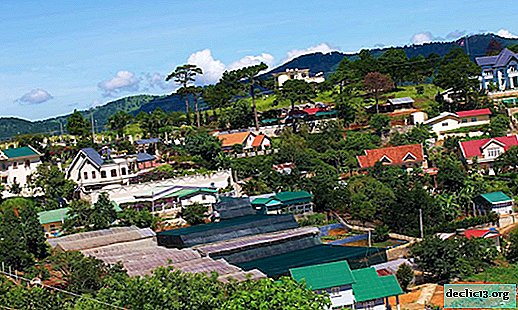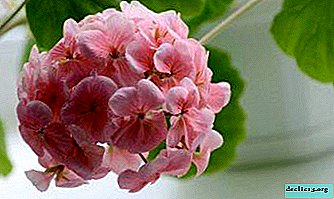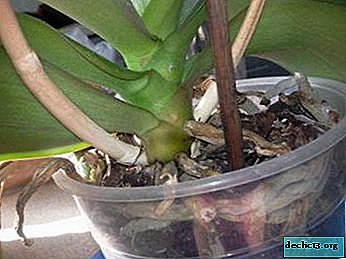Secrets of orchid care: how to prune phalaenopsis after flowering?
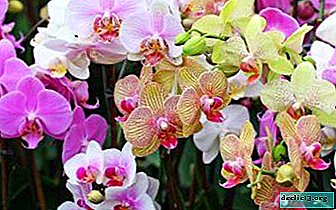
Phalaenopsis is a variety of orchids, which is popular and differs from its counterparts in its undemanding nature. The most beautiful period in the life cycle of a plant is flowering. At the end, which remains a bare peduncle. Novice flower lovers do not always understand what to do next. Whether this branch needs to be cut or a similar procedure can do much harm. We will tell you more about this below.
How much does an orchid bloom?
The orchid shoots an arrow after a period of rest, when she rested, gained strength. With the advent of the peduncle, the flowering process begins: buds are formed, which subsequently grow, develop, bloom. The flower stalk is involved in the development of inflorescences, nourishes them with moisture, nutrients. You can find out how the peduncle grows in phalaenopsis, and also see how it looks in the photo, here.
The duration of flowering varies from 1-10 months. On average, an adult exot blooms for about 3 months in a row, and a young one for 1 month. Thus, the orchid may well bloom several times a year, and in the intervals - to recover. Duration depends on genetic prerequisites, previous flowering, growing conditions of the plant at home.
With proper care, phalaenopsis blooms all year round, every 3-6 months.What does cropping mean?
The pruning procedure is the removal of an orchid flower stalk. It is eliminated in a dry form, like a dead part of a flower. Sometimes it happens that immediately after the completion of the flowering phase, the peduncle quickly turns yellow and dries. Perhaps as a result of a lack of nutrients or moisture, and maybe the reason for everything is natural aging. In any case, in this form, the peduncle of the orchid is no longer useful, it can be safely eliminated.
And it happens that a healthy peduncle stays green for several months, but there are no changes in its state (more about why phalaenopsis does not bloom, read here, and from this article you will learn how to make an orchid blossom at home). Therefore, this specimen can also be cut, and use it for propagation by the method of cuttings. Thus, in its place a young shoot will appear faster.
Is it necessary to carry out such a procedure?
First, you need a visual inspection of the peduncle. Pay attention to the color, the state of how it behaves. The signs of drying are indicated by:
- loss of shape;
- discoloration, gradually turns pale, becoming yellow, brown or even brown;
- peduncle looks like a dry stick;
- acquires a certain softness, fades;
- the green process is in one state for six months.
 With complete drying of the peduncle, pruning can be done. However, if the arrow is not completely dry, it is better to wait a bit with pruning. It is useful for supplying plants with moisture, various substances. Removing prematurely will cause stress for exotics, subsequently, recovery may take up to six months.
With complete drying of the peduncle, pruning can be done. However, if the arrow is not completely dry, it is better to wait a bit with pruning. It is useful for supplying plants with moisture, various substances. Removing prematurely will cause stress for exotics, subsequently, recovery may take up to six months.
Pruning is not advised to perform in the presence of a green tip, which may be signs of future flowering. Also, the fading arrow should not be touched if the kidneys are swollen on it. In this case, you can remove the dry area to the green part or just above the kidney.
When is it worth it?
After flowering the orchid, the next phase begins - dormancy, let's see if pruning is necessary (for details on how to care for the orchid after flowering, read here). Experienced flower growers believe that this particular period of time is ideal for pruning dry flower stalks. For each plant, this moment is different, in most cases, phalaenopsis is cut off in late October and before early November.
Despite the time frame, it is possible to cut off the flower stalks only after they have completely dried out so that not one living kidney remains. If you cut it “according to the living,” then we will certainly harm the plant, weaken it. All forces will be spent on wound healing.In the event that phalaenopsis has matured during the summer season, has grown enough green mass, then he has the right to decide whether to resume flowering or is preparing for bed.
Instruction manual
If you are sure that the peduncle will not bring any benefits, the appearance also speaks for itself, then it is worth starting preparation for the removal process.
Tool preparation
A sharp knife is suitable for the operation, the main thing is not to damage the leaves. But the best option is a garden pruner. It is more reliable, does not injure plants, makes a neat, even cut without squeezing the edges. Before starting, the tool must be sanitized. Either heat on a fire or rub with alcohol.
Seat selection
Before you begin the process itself, you should clearly know where to cut. We cut off the dry flower-bearing process almost completely, leaving a distance of 1 cm to the outlet.
Option selection
Sometimes, after examining the peduncle, you can see sleeping kidneys. Of these, buds or babies may appear. In this case, there is an option make a cut 1.5-2 cm above the kidneys. And all, in spite of all efforts, there is no guarantee that the buds will come to life and flowering will resume. Also, this pruning option will significantly slow down the growth of new peduncles. After all, the plant spends all its strength on maintaining the old flower-bearing processes. What choice to make: leave the kidneys or not slow down the development of young peduncles, you decide.
Sequence
- Using previously prepared tools, carefully cut off all the dry part of the plant.
- The stump should remain no more than 2 cm.
- Sprinkle a live slice with crushed activated carbon, ground cinnamon.
- After drying, cut off the sealed place with molten wax.
- If there are dry leaves, roots, remove in the same way, but without wax.
- Within two weeks, the plant is restored. Better to do without watering.
Further care
The period after flowering of phalaenopsis is definitely important for further development. It is at this time that you should pay as much attention to caring for the plant as possible.Correct actions will affect the following appearance of flowers:
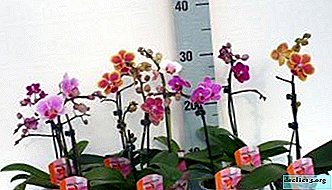 Watered regularly, not more than 1 time per week. Water should not fall on the leaves and stagnate in the sinuses, which is fraught with diseases and rot.
Watered regularly, not more than 1 time per week. Water should not fall on the leaves and stagnate in the sinuses, which is fraught with diseases and rot.- It is recommended to spray daily.
- For irrigation and spraying, take water exclusively soft, without salt impurities, at room temperature.
- The amount of top dressing is reduced to 1 time per month.
- The best moment for transplanting a flower into a new soil. However, updating the substrate is advised to be performed no more than 1 time in 2-3 years.
- The minimum limit of humidity in the room is 50%.
- Phalaenopsis requires diffused light.
- The daily temperature in the room is maintained within + 22-24 ° C.
- Be sure to ventilate regularly. However, make sure that cold air does not fall on the flower.
- Keep the pot with the plant away from heating appliances.
The trimming process seems impossible only at first glance. And everything happens the same way as with the cutting of other indoor plants. The main thing is not to rush, to carry out the procedure carefully so as not to hurt the vital organs of the phalaenopsis and not to forget about using an antiseptic to cut. Circumcision, of course, is stress for the plant, but with proper care, new flowering will come very soon.

 Watered regularly, not more than 1 time per week. Water should not fall on the leaves and stagnate in the sinuses, which is fraught with diseases and rot.
Watered regularly, not more than 1 time per week. Water should not fall on the leaves and stagnate in the sinuses, which is fraught with diseases and rot.